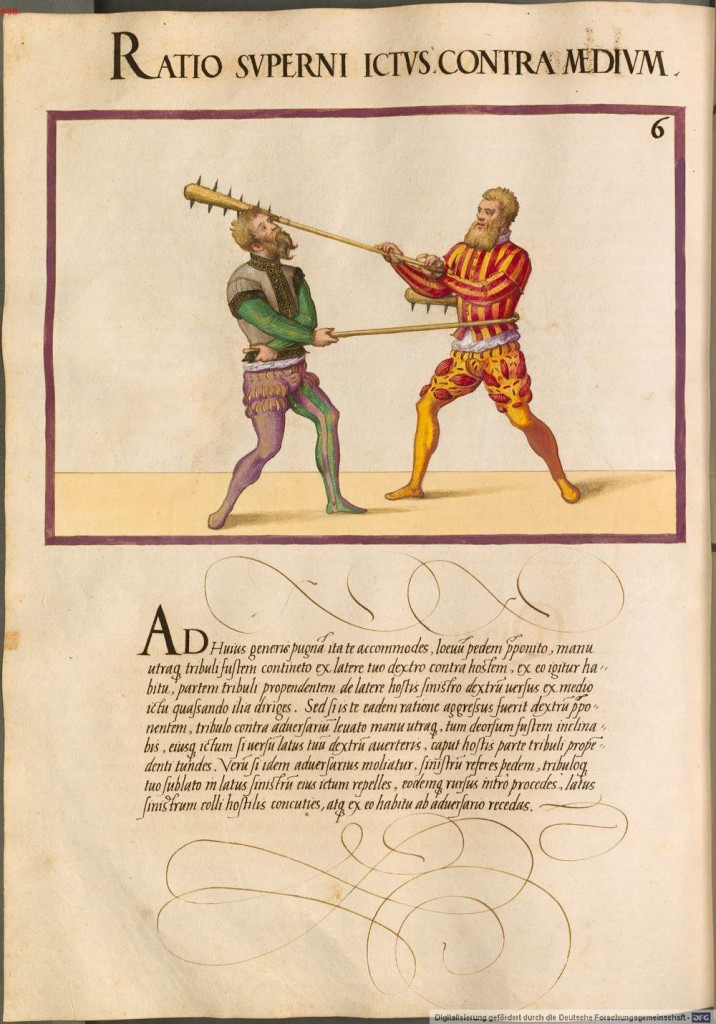Translation by Rachel Barkley
Reckoning of a High Blow against the MiddleYou will accustom yourself to a fight of this kind: Put forward the left foot, grasp the body of the flail with both hands from your right flank[1] against your enemy, from this position thence you will direct the hanging part of the flail against the left flank of your enemy, you turning from the middle the blow by striking the intestines.[2]
But if he will have attacked you by the same reckoning, you putting your right foot forward, lift the flail with both hands against your adversary, then you will turn the flail-body downwards, and if, you having turned his blow to your right flank, will have avoided the blow of his, you will strike the head of the enemy with the hanging part of the flail. [3]
If your adversary will attempt the same, you will draw back the left foot, and you will repel the blow of his on the left flank with your flail raised, and you will proceed again with the same, you will strike the left flank of the enemy’s neck, and you will withdraw from this position.
Interpretation by Owen Townes
Setup:
Agente:
Left foot forward
Medium grip
High guard to right side or Tail guard to right side
Patiente:
Right foot forward,
middle grip,
high guard
Play:
Agente:
Onside mittelhau
Patiente:
Deflect with staff to right-side Scales
Switch to over-over grip
Onside oberhau
Agente:
Step back with left foot
Block with left-side Scales
Step in with left foot, deliver onside oberhau and withdraw
Observations:
The use of the static block by Agente in the re-counter shows one of the few exceptions to the preference for deflection. The step backward with the left foot increases the likelihood that the incoming flail-head can be blocked (as the staff is now where Agente’s head was, and therefore where Patiente’s flail-head expects to be) and also voids the left side away from the strike.
And who doesn’t love the opportunity to cross-check their enemy in a complete period fashion?

Leave a Reply